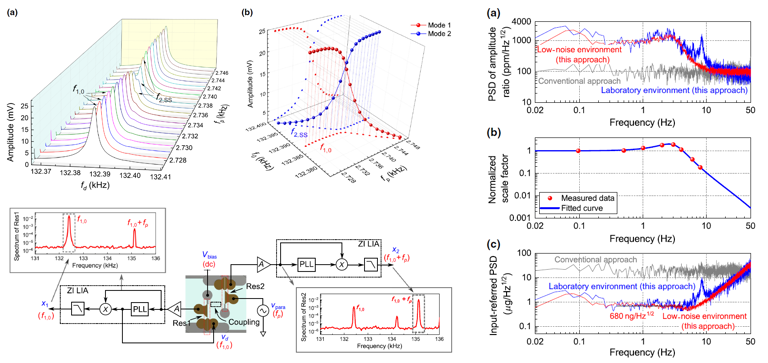Sensor performance enhancement using modal interactions
Published:
Minaturization enabled fitting a phone into our pocket, bringing the prosperity of our current digital age. However, the scaling law of miniaturization does not make it easy for us. The objective of this research is to address this challenge using modal interactions within micro-devices.
Modes of vibration
Systems in the nature have multiple modes of vibration, see these two amazing videos for demonstration of modes (video 1, video 2). Modes of vibration are associated with frequency and energy, which can also be related to energy levels in quantum mechanics.
Modal interactions
Typically these modes are uncoupled, i.e. the coupling is zero or negligible. Therefore, each modes are more or less isolated from other modes. Through modal interactions, we are able to take full advantages of the energy from other modes, and introduce interesting physical phenomena into the systems.
Mode localization
One of the interesting phenomena is mode localization, an extension from the famous Anderson Localization, named after Nobel Laureate P. W. Anderson. This part of research is essentially an extension from my previous work on Mode-localized Sensors. Utilizing this effect, the sensitivity of MEMS sensors can be significantly enhanced, and the noise floor can also achieve sub-μg/Hz1/2 level.

* Selected research output on mode-localized sensors. More details about my work in this area can be found in the publications tab, under the weakly coupled resonators section.
Mode interactions with parametric pump
One way to improve the sensitivity of mode-localized sensor is to apply a parametric pump signal, which periodically modulates the stiffness of a resonator. This allows for the creation of a tunable virtual link (dynamic coupling) between two coupled modes, which can be orders of magnitude weaker/stronger than the existing coupling, thus further improving the sensitivity and resolution.

* A MEMS accelerometer with significantly enhanced sensitivity and resolution. Details of this work can be found here.
Sensitivity transfer
Another interesting phenomena recently discovered is sensitivity transfer between modes. Essentially, we are able to “clone” the sensitivity of another mode to the desired mode of operation. In this way, we are able to enhance the sensitivity of a MEMS sensor. Additionally, if desired, e.g. for MEMS timing references, the sensitivity to ambient fluctuations can also be reduced by “cloning” the other modes with much lower sensitivity. ore details to follow…

* Sensitivity transfer from another mode. More details of this work will be presented at IEEE MEMS 2021 as an oral presentation, stay tuned…
Q-factor enhancement
One key figure-of-merit of MEMS sensors based on resonators is the Q-factor. Typically, the higher the Q-factor, the better. Currently, we are also invesitgating Q-factor enhancement techniques based on modal interactions. A few papers are currently being prepared. More details to follow…
